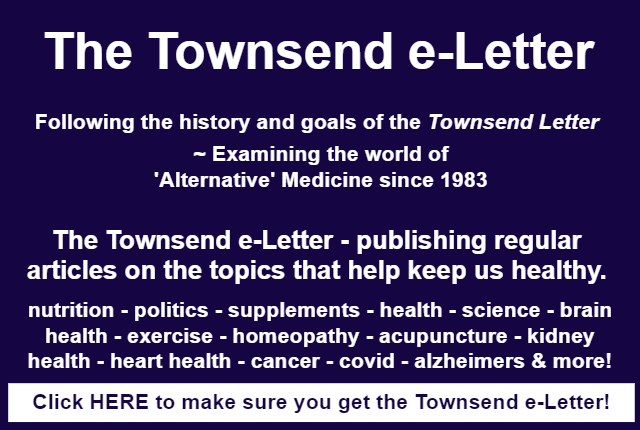Alan R. Gaby, MD
Preventing Bronchopulmonary Dysplasia in Preterm Infants
One hundred twelve preterm Chinese infants (mean gestational age, 29.5 weeks) were randomly assigned to receive 800 IU per day of vitamin D or no vitamin D (controls), starting within 48 hours of birth and continuing for 28 days. The incidence of bronchopulmonary dysplasia (BPD) at day 28 was 58% lower in the vitamin D group than in the control group (12.3% vs. 29.1%; p < 0.03). Compared with control, vitamin D significantly decreased serum levels of inflammatory markers (C-reactive protein, interleukin-6, and tumor necrosis factor alpha).
Comment: BPD is a chronic lung disease that develops in premature infants treated with oxygen and positive pressure ventilation for respiratory distress syndrome. Infants with BPD are at high risk for pulmonary complications and death during the first two years of life, as well as poor growth and delayed development. In premature infants, lower vitamin D status at birth is associated with an increased risk of developing BPD. In this study, vitamin D supplementation resulted in a 58% decrease in the incidence of BPD.
I have had concerns about the credibility of some of the studies coming from China. I did not find anything of compelling concern in reviewing this study, although I did calculate that there is only a 2% probability that the baseline characteristics reported in Table 1 could have occurred by chance. If this research can be confirmed, it would represent a significant advance in the treatment of premature infants. Other nutrients that have been reported to decrease the incidence of BPD are vitamin A and inositol.
Ge H, et al. Effects of early vitamin D supplementation on the prevention of bronchopulmonary dysplasia in preterm infants. Pediatr Pulmonol. 2022;57:1015-1021.
Preventing Retinopathy of Prematurity in Preterm Infants
Ninety very-low-birth-weight (VLBW) infants in Mexico City who had respiratory distress syndrome were randomly assigned to receive, in double-blind fashion, 12.5 IU of vitamin E orally twice a day or placebo from day 3 to day 28 of life. The incidence of retinopathy of prematurity (ROP) at day 28 was 60% lower in the vitamin E group than in the placebo group (12.5% vs. 31%; p = 0.03).
Comment: ROP (also called retrolental fibroplasia) is a disease that affects the eyes of premature babies. It is characterized by abnormal growth of retinal blood vessels. In severe cases, it can lead to blindness, retinal detachment, or refractive errors. Oxidative stress contributes to the pathogenesis of ROP. Respiratory distress syndrome is a risk factor for ROP, in part because it is treated with oxygen therapy, which increases oxidative stress.
Previous studies on the role of vitamin E (an antioxidant) for the prevention of ROP were halted because of an increased incidence of sepsis and necrotizing enterocolitis. These complications were attributed to excipients in the vitamin E products, which included polyethylene glycol, propylene glycol, ethanol, and polysorbate 80.
The vitamin E used in the present study was free of these potentially toxic substances. Because it did not contain preservatives, the vitamin E was prepared fresh every day. If the results of this study can be confirmed, preservative-free vitamin E could be added to vitamin A, inositol, and possibly vitamin D (as discussed in the review directly above) as nutrients that can benefit premature infants.
Romero-Maldonado S, et al. Efficacy of water-based vitamin E solution versus placebo in the prevention of retinopathy of prematurity in very low birth weight infants: A randomized clinical trial. Medicine. 2021;100:e26765.
Does Vitamin D Prevent Fractures?
Middle-aged and elderly participants in the Vitamin D and Omega-3 Trial (n = 25,871) were randomly assigned to receive, in double-blind fashion, 2,000 IU per day of vitamin D, 1 g per day of omega-3 fatty acids, both supplements, or placebo for a median of 5.3 years. Participants were not recruited on the basis of vitamin D deficiency, low bone mass, or osteoporosis.
During the study, 1.991 fractures occurred. Compared with the placebo group, the hazard ratio in the vitamin D group for total fractures was 0.98 (p = 0.70); for nonvertebral fractures, 0.97 (p = 0.50); and for hip fractures, 1.01 (p = 0.96). The results did not differ according to sex, race, body-mass index, or baseline serum 25-hydroxyvitamin D level.
Comment: In this study, vitamin D supplementation did not significantly decrease the risk of fractures, compared with placebo, in healthy middle-age and elderly adults who were not selected for vitamin D deficiency, low bone mass, or osteoporosis. Two meta-analyses of 5 and 11 double-blind trials, respectively, found that supplementation with 700-800 IU per day of vitamin D reduced the incidence of hip fractures by 26%-30% in elderly individuals. In contrast, no significant benefit was observed with 400 IU per day.1,2
In addition, a three-year study of middle-aged and elderly Canadians found that loss of bone mineral density (measured at the radius and tibia) was greater in participants who received 4,000 IU or 10,000 IU per day of vitamin D than in those who received 400 IU per day.3 In that study, the mean serum 25-hydroxyvitamin D level at baseline was 31.5 ng/ml. Taken together, these studies raise the possibility that in the general population there is a “therapeutic window” for vitamin D supplementation, such that both high doses and low doses are less effective than moderate doses.
It is possible that vitamin D was ineffective in the present study because the dosage was too high. Based on the available evidence, I usually recommend 800-1,200 IU per day of supplemental vitamin D for the average healthy person who does not have adequate sunlight exposure.
Burt LA, et al. Effect of high-dose vitamin D supplementation on volumetric bone density and bone strength: a randomized clinical trial. JAMA 2019;322:736-45.
Probiotic Prevents Mastitis in Nursing Mothers
Three hundred twenty-eight nursing mothers in Spain, Poland, Germany, or Austria were randomly assigned to receive, in double-blind fashion, Ligilactobacillus salivarius PS2 (a probiotic strain isolated from the milk of a healthy woman) at a dose of 109 colony-forming units per day or placebo from week 35 of pregnancy until 12 weeks after delivery. The proportion of women who developed mastitis during the study was 70% lower in the probiotic group than in the placebo group (6% vs. 20%; p < 0.03).
Comment: Mastitis is one of the main reasons for unwanted cessation of breastfeeding. Any treatment that could decrease the incidence of mastitis would help improve infant nutrition and enhance bonding between mother and baby. The probiotic product used in this study was distributed by Danone Nutricia Research and was manufactured by Dupont. Four of the study authors are employees of Danone Nutricia Research, which also funded the study. Because of these potential conflicts of interest, confirmatory studies by independent researchers are needed. The product used in this study does not appear to be commercially available at present.
Jimenez E, et al. Ligilactobacillus salivarius PS2 supplementation during pregnancy and lactation prevents mastitis: a randomised controlled trial. Microorganisms. 2021;9:1933.
Does Iron Deficiency Increase the Risk of Developing Postpartum Hemorrhage?
A retrospective study was conducted on 120,129 women delivered at a single hospital in Hong Kong over a 22-year period. Iron-deficiency anemia (IDA) was defined as a hemoglobin level <10 g/dl at any time during the pregnancy and serum ferritin <15 µg/L. Women undergoing elective caesarean section were excluded. The prevalence of IDA was 0.86%.
Compared with women without IDA, those with IDA had a higher incidence of postpartum hemorrhage (4.5% vs. 3.2%, p = 0.024) and atonic postpartum hemorrhage (3.1% vs. 2.0%, p = 0.01), despite similar incidences of labor induction and augmentation. After adjustment for age, body mass index, height, parity, labor induction and augmentation, and other factors, IDA was independently associated with a 46% increase in total postpartum hemorrhage and a 59% increase in atonic postpartum hemorrhage.
Comment: Postpartum hemorrhage is defined as blood loss of 500 ml or more within 24 hours after vaginal delivery or 1,000 ml or more during and after caesarean delivery. It is a leading cause of maternal morbidity and mortality. In recent decades, the incidence of postpartum hemorrhage has increased in developed countries such as the US and Canada. This increase has largely been related to an increase in uterine atony, which is the failure of the uterus to contract adequately after delivery. Uterine atony accounts for 70-90% of all cases of postpartum hemorrhage.
Uterine atony may be due in part to the use of oxytocin for induction or augmentation of labor. However, iron deficiency could also contribute to uterine atony. Iron is a cofactor for cytochrome oxidase, an enzyme that plays a role in muscle contraction. Iron deficiency may cause weakness of uterine muscles, potentially impairing their capacity to decrease bleeding by clamping down on blood vessels. An analogous situation – excessive menstrual bleeding – has been found in previous studies to improve after correction of iron deficiency.4
In addition to potentially increasing the risk of postpartum hemorrhage, iron deficiency during pregnancy is associated with an increased risk of preterm birth, low birthweight and small-for-gestational-age infants, and neurocognitive and other developmental impairments in the offspring in later childhood. For all of these reasons, iron status should be monitored during pregnancy and iron-replacement therapy should be given when appropriate.
Lao TT, et al. Iron deficiency anaemia and atonic postpartum haemorrhage following labour. Reprod Sci. 2022;29:1102-1110.
Shiitake Mushroom Extract Promotes Clearance of Human Papillomavirus Infection
Fifty US women over 30 years of age (mean age, 44.5 years) with persistent human papillomavirus (HPV) infection for more than two years and cervical histology ranging from normal to cervical intraepithelial neoplasia II were randomly assigned to receive, in double-blind fashion, 3 g of active hexose correlated compound (AHCC) once a day on an empty stomach or placebo for six months. After six months, both groups received placebo for another six months.
AHCC (Amino Up, Ltd., Sapporo, Japan) is a proprietary standardized extract of cultured mycelia of Lentinula edodes (Shiitake mushroom) that has been shown to have immunomodulatory effects. Participants were evaluated every three months with HPV DNA and HPV RNA testing and blood tests for a panel of immune markers. Forty-one women completed the trial.
In the AHCC group, 14 (63.6%) of 22 patients were HPV RNA/HPV DNA negative after six months; of those 14 patients, nine (64.3%) had a durable response, defined as being HPV RNA/HPV DNA negative 6 months after treatment was discontinued. Thus, nine of 22 women (40.9%) had a durable response to treatment. In the placebo group, two (10.5%) of 19 participants were HPV negative at 12 months (data at 6 months were not presented).
Twelve placebo-treated women elected to receive AHCC for six months after the end of the study. Of those, six (50%) were HPV RNA/HPV DNA negative after six months of AHCC supplementation. No serious side effects were reported.
Comment: Shiitake is an edible mushroom that is considered a medicinal mushroom in some forms of traditional medicine. In the present study, treatment with 3 g per day of AHCC (an extract of Shiitake) for six months promoted the clearance of persistent HPV infection, presumably by enhancing immune function.
Smith JA, et al. AHCC supplementation to support immune function to clear persistent human papillomavirus infections. Front Oncol. 2022;12:881902.
A Downside of Using Masks
Nasal mucociliary clearance was assessed in 48 healthcare workers in India. The assessment was then repeated 15 minutes after the participant had worn an N95 mask for four hours. The test used to assess nasal mucociliary clearance was a commonly used test known as the saccharin transit time (STT) test. In this test, a small particle of saccharin sodium (mean weight, 4.9 mg) is placed in the floor of the nasal cavity just distal to the mucocutaneous junction. STT is defined as the amount of time it takes between the placement of the particle and the perception of a sweet taste. Mean STT was longer after than before the use of the mask (667 vs. 580 seconds; p = 0.002).
Comment: Nasal mucociliary clearance is one of the most important mechanisms in the respiratory tract. It involves mucus secretion and rhythmic motion of cilia, which helps remove toxins, debris, and microorganisms from the respiratory tract. If prolonged mask-wearing slows nasal mucociliary clearance, it could increase susceptibility to developing respiratory infections. That possibility should be taken into account when assessing the risks and benefits of wearing a mask for the purpose of preventing infections.
Rajan N, et al. Does prolonged use of N95 masks affect nasal mucociliary clearance? a single group pre-post study. Ann Otol Rhinol Laryngol. 2022;131:730-736.
Vitamin D Improves Erectile Dysfunction, or Research Fraud from Turkey?
Eighty-four Turkish men with erectile dysfunction and lower urinary tract symptoms who did not have an adequate response to treatment with 5 mg per day of tadalafil (Cialis) for one month and who had a serum 25-hydroxyvitamin D level <20 ng/ml were studied. The men continued tadalafil and were also supplemented with vitamin D. The mean score on the International Index of Erectile Function-Erectile (IIEF-EF) was 10.7 at baseline (indicating moderate-to-severe erectile dysfunction) and improved to 24.2 after one month (indicating mild erectile dysfunction).
Comment: There are several issues about this paper that cause me to question its credibility.
- Baseline characteristics of the study participants, such as age, body mass index, and serum testosterone were listed both in the abstract of the paper and in Table 1. The numbers in these two areas of the paper are completely different.
- The dosage of vitamin D was listed in the abstract as 100,000 IU once a week for one month. However, in the body of the paper vitamin D therapy was described as a single dose of 150,000 IU, followed by the same dose 15 days later.
- One of the inclusion criteria was a serum 25-hydroxyvitamin D (25[OH]D) level <20 ng/ml. However, in Table 1, the mean 25(OH)D level was 15.69 ± 8.57 ng/ml. Assuming a normal (Gaussian) distribution, that would mean that around 16% of the study participants would have a 25(OH)D level greater than 24.26 ng/ml, and around 31% of the participants would not have a value below 20 ng/ml. Thus, nearly one-third of the study participants should not have been eligible to be in the study.
- I am not aware of any biological basis from which to expect that vitamin D supplementation would produce such a dramatic improvement in erectile function, particularly among men who had failed to respond to a medication that is effective around 70% of the time.
I wrote twice to the corresponding author of the paper requesting clarification of these issues. Specifically, I requested the raw data on baseline serum 25(OH)D levels. I did not receive a response.
Ermec B, et al. The effect of vitamin D replacement in patients with lower urinary tract complaint/erectile dysfunction resistant to Tadalafil 5 mg treatment: A pilot clinical study. Andrologia. 2022;54:e14473.
References
1. Bischoff-Ferrari HA, et al. Fracture prevention with vitamin D supplementation: a meta-analysis of randomized controlled trials. JAMA. 2005;293:2257-2264.
2. Bischoff-Ferrari HA, et al. A pooled analysis of vitamin D dose requirements for fracture prevention. N Engl J Med. 2012;367:40-49.
3. Burt LA, et al. Effect of high-dose vitamin D supplementation on volumetric bone density and bone strength: a randomized clinical trial. JAMA. 2019;322:736-745.
4. Taymor ML, et al. Menorrhagia due to chronic iron deficiency. Obstet Gynecol. 1960;16:571-576.


